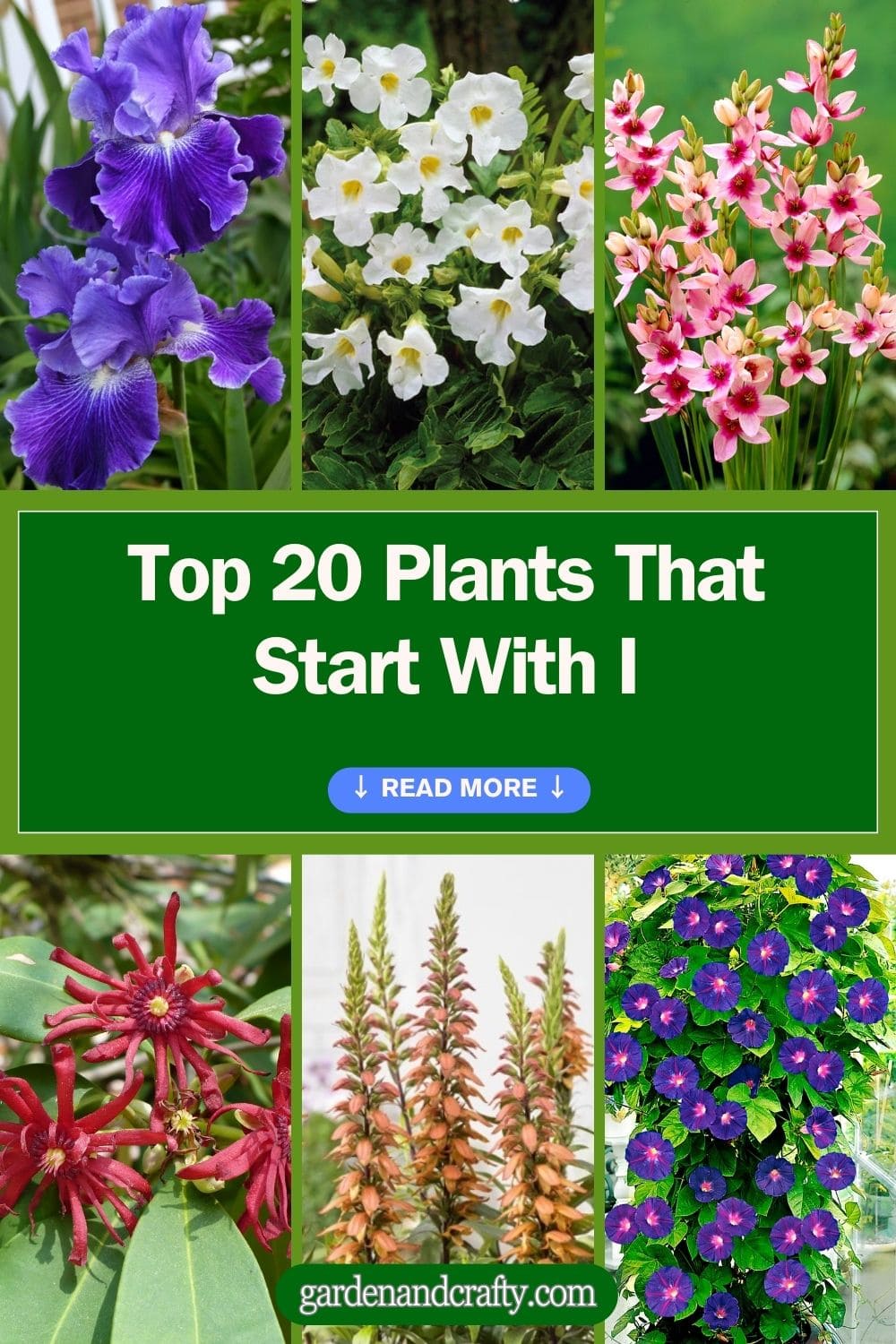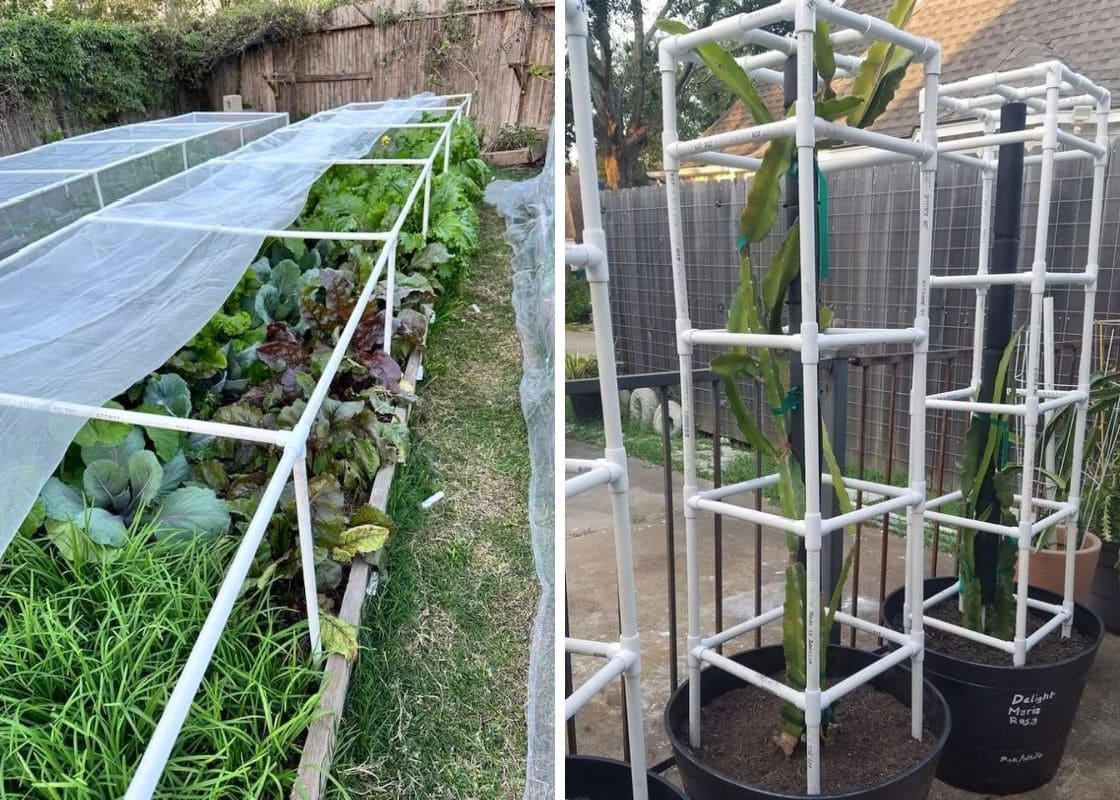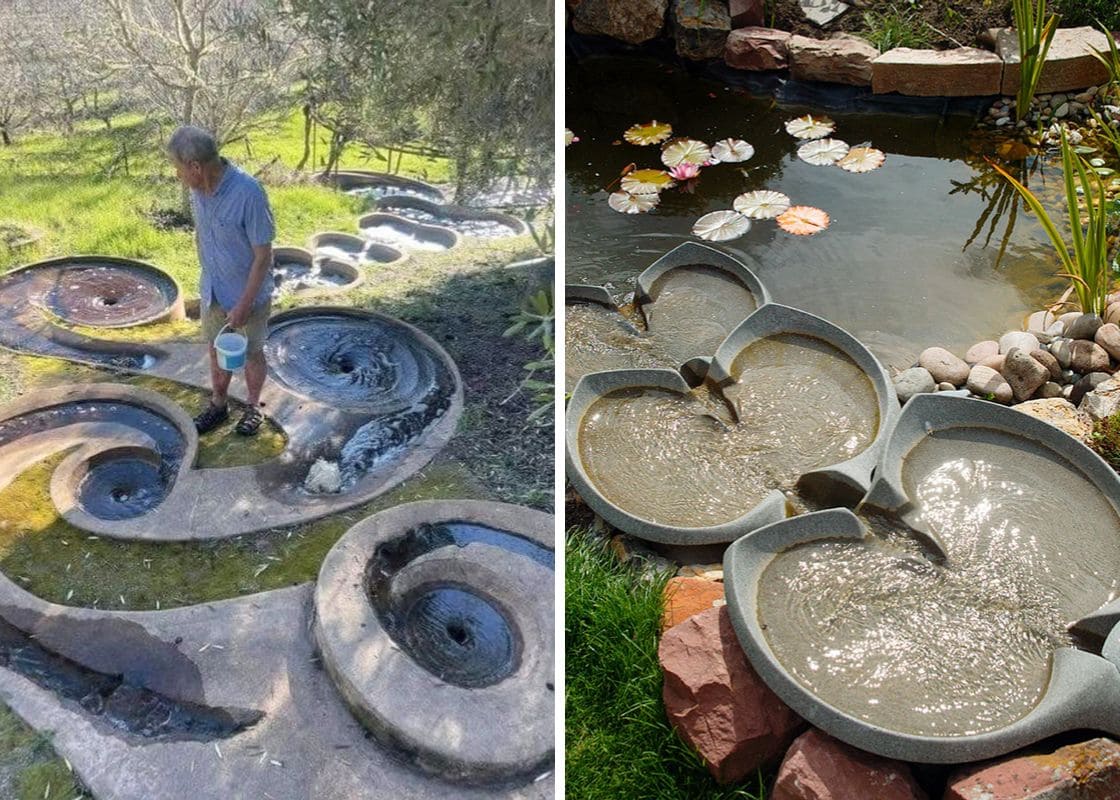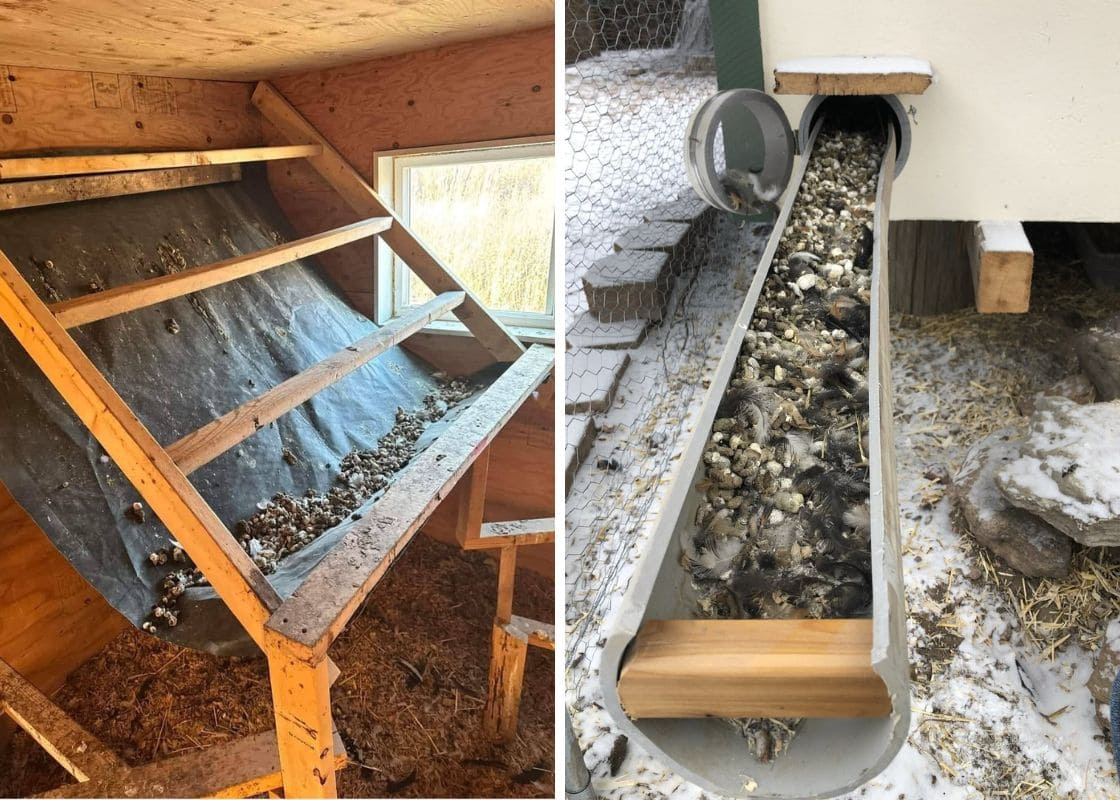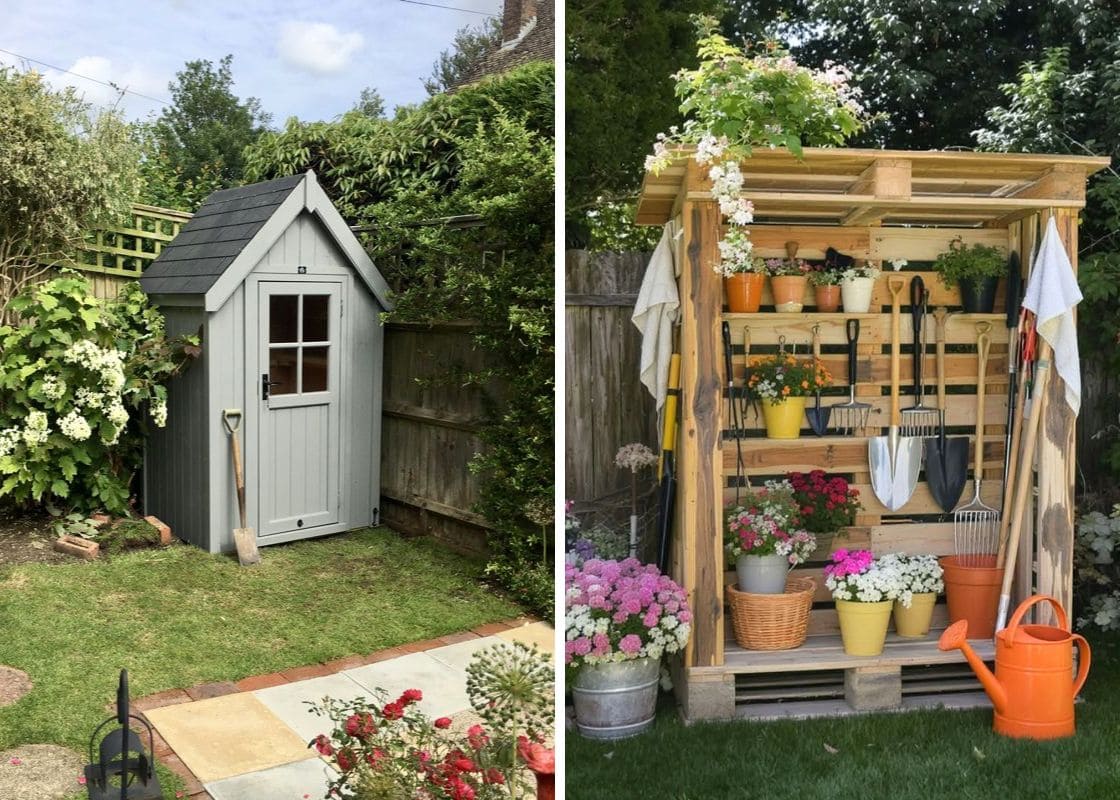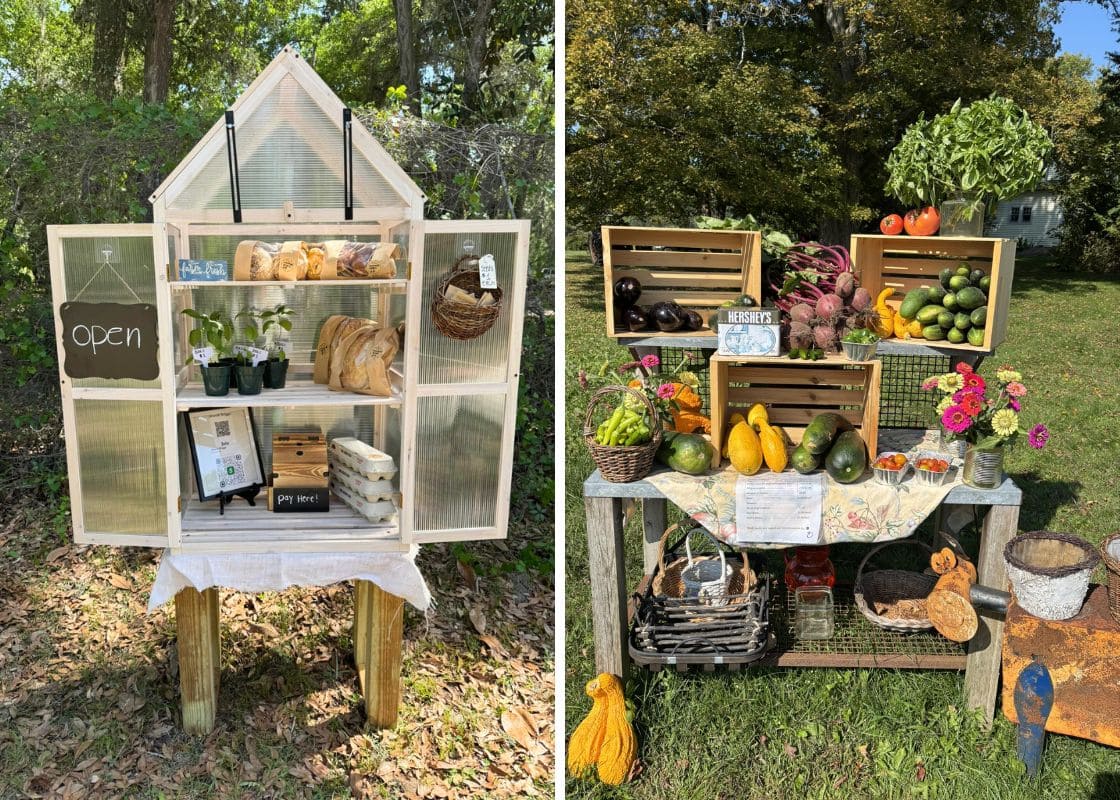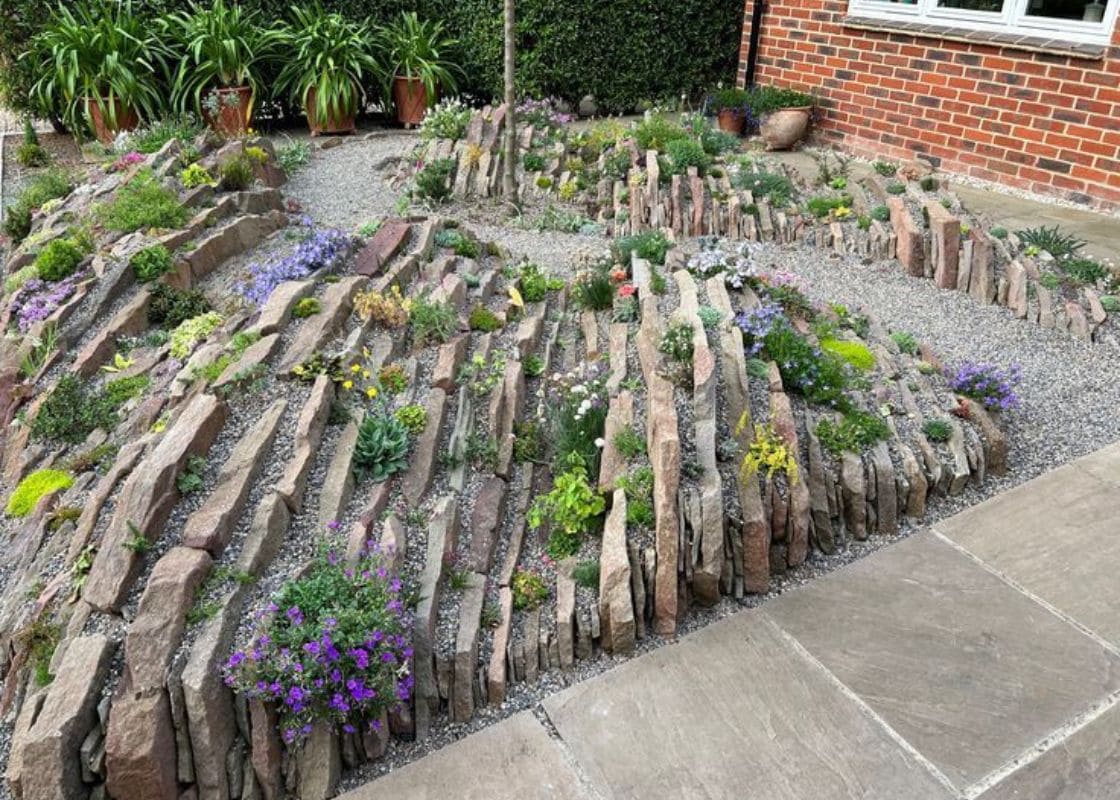Are you a passionate gardener looking for fresh ideas to spice up your garden?
Perhaps you’ve already tried all the common flowers and plants, and now you’re eager for something new and exciting.
Don’t worry! In the following article, we will introduce a list of plants starting with “i” which will breathe new life into your garden.
Ixia (Corn Lily)
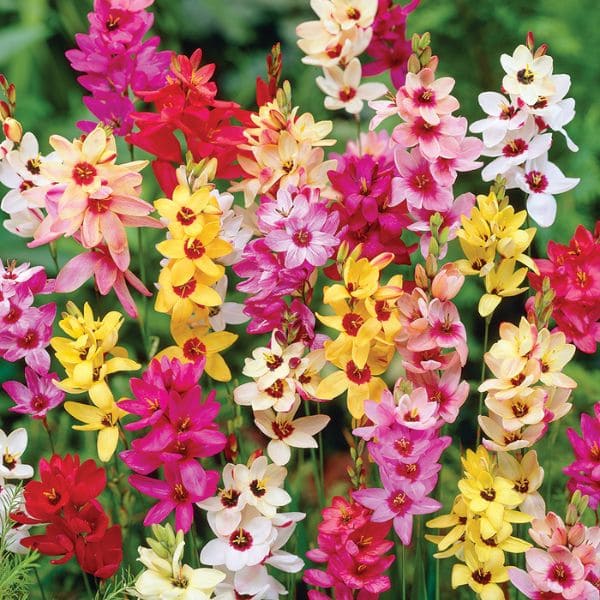
- Plant Type: Perennial
- Bloom Time: Spring
- Sun Exposure: Full Sun
- Soil Requirement: Well-drained
- USDA Hardiness Zones: 7-10
Native to South Africa, Ixia owns grass-like leaves and striking star-shaped flowers.
Growing Ixia is a breeze. You can simply plant the bulbs in autumn, about 3 inches deep and spaced 4 inches apart. They will reward you with red, yellow, pink, or white blooms in spring.
To keep your Ixia looking its best, deadhead spent flowers to encourage more blooms and watch out for common pests like aphids and slugs.
In addition, Ixia attracts pollinators like bees and butterflies. Whether used in borders, rock gardens, or containers, it is sure to bring joy and vibrant color to your gardening space.
Iris
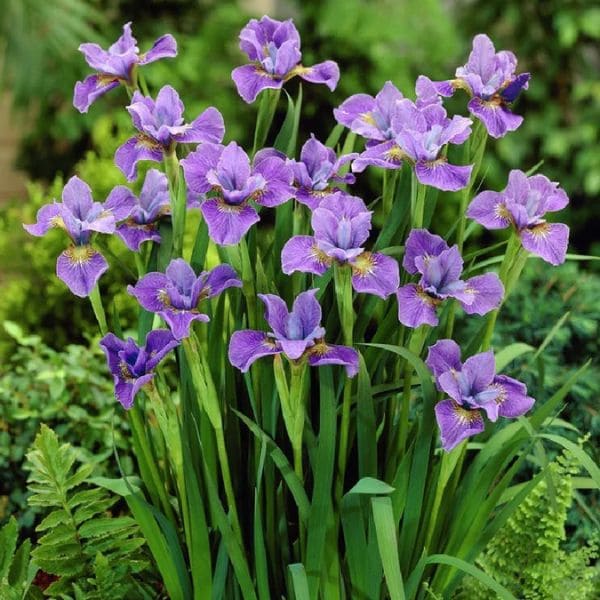
- Plant Type: Perennial
- Bloom Time: Spring to Early Summer
- Sun Exposure: Full Sun to Partial Shade
- Soil Requirement: Moist, Well-drained
- USDA Hardiness Zones: 3-9
Iris has sword-like foliage and a rainbow of flower colors ranging from blue and purple to yellow and white.
To grow iris, you should plant the rhizomes in late summer or early autumn, ensuring the tops are just above the soil surface. Space them about 12-24 inches apart to allow room for growth.
Iris is perfect for borders, rock gardens, and even as cut flowers for indoor arrangements.
To keep your irises healthy, divide the clumps every 3-4 years to prevent overcrowding.
Impatiens (Busy Lizzie)

- Plant Type: Annual
- Bloom Time: Spring to Fall
- Sun Exposure: Partial to Full Shade
- Soil Requirement: Moist, Well-drained
- USDA Hardiness Zones: 10-11 (often grown as an annual in cooler zones)
Impatiens are beloved for pink, red, white, and purple blooms. With their lush, green foliage and abundant flowers, they are perfect for adding color to low-light spots in your garden.
You can plant impatiens in spring after the danger of frost has passed. Space the plants about 8-12 inches apart to allow for proper airflow and growth.
For best results, feed your Impatiens with a balanced, water-soluble fertilizer every few weeks and watch out for aphids and spider mites.
Impatiens are ideal for garden beds, borders, containers, and hanging baskets.
Indian Paintbrush
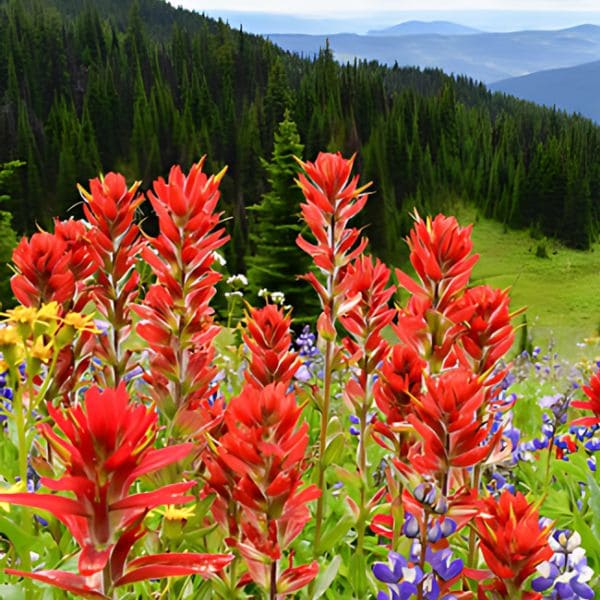
- Plant Type: Perennial
- Bloom Time: Spring to Summer
- Sun Exposure: Full Sun
- Soil Requirement: Well-drained
- USDA Hardiness Zones: 3-8
Indian paintbrushes have bright red, orange, or yellow bracts that resemble a paintbrush dipped in vibrant colors.
These plants are semi-parasitic, meaning they attach their roots to neighboring plants to access additional nutrients.
To grow them successfully, you need to plant seeds in late fall or early spring, preferably near a host plant like grass or sagebrush.
Indian Paintbrush is relatively low-maintenance, but watch for pests like aphids and diseases like powdery mildew.
This plant is excellent for wildflower gardens, meadows, and naturalized areas, adding a splash of color and attracting bees and hummingbirds.
Ice Plant
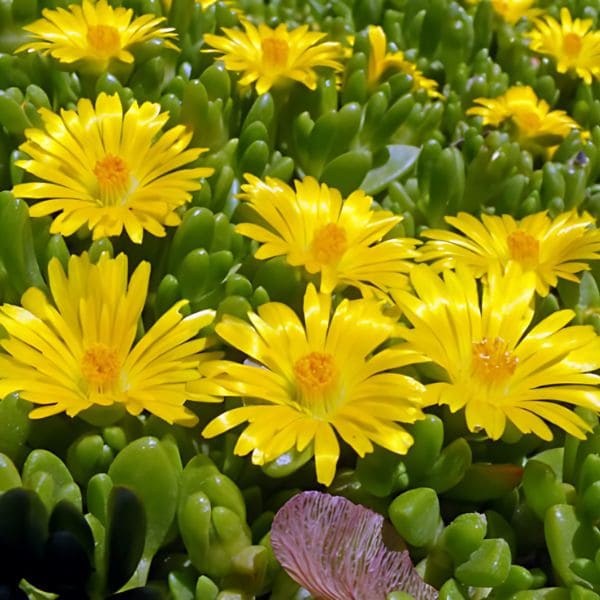
- Plant Type: Perennial, Succulent
- Bloom Time: Spring to Summer
- Sun Exposure: Full Sun
- Soil Requirement: Sandy, Well-drained
- USDA Hardiness Zones: 5-9
Ice plant has daisy-like flowers with various colors and succulent foliage. The leaves have a unique, frosty appearance that looks as though they are covered in tiny ice crystals.
You should plant it in the spring, spacing the plants about 12 inches apart to allow for growth and good air circulation.
Water sparingly, as ice plants are drought-tolerant and prefer slightly dry conditions. So, they are perfect for rock gardens, borders, and ground covers.
Ice plants are also a fantastic choice for erosion control due to their spreading habit.
Ipomoea (Morning Glory)

- Plant Type: Annual or Perennial Vine
- Bloom Time: Summer to Fall
- Sun Exposure: Full Sun
- Soil Requirement: Well-drained
- USDA Hardiness Zones: 9-11 (Annual in cooler zones)
Native to tropical America, ipomoea has trumpet-shaped flowers in blue, purple, pink, and white unfurling in the morning sunlight.
When growing ipomoea, you should plant seeds directly in the garden after the last frost, or start them indoors a few weeks earlier.
Provide a trellis or support for the vines to climb, and watch them quickly cover fences, pergolas, and trellises with their lush foliage and vibrant flowers.
Ipomoea requires regular watering, especially during dry spells. It is perfect for adding vertical interest to your garden and attracts pollinators.
Ixora (Flame of the Woods)
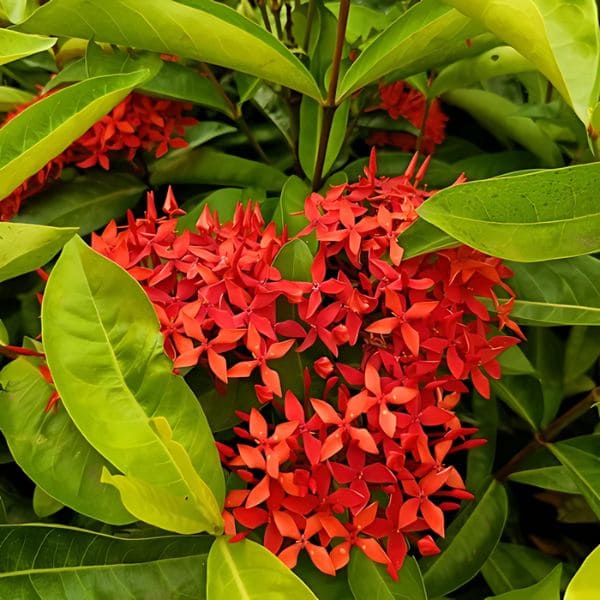
- Plant Type: Evergreen Shrub
- Bloom Time: Year-round
- Sun Exposure: Full Sun to Partial Shade
- Soil Requirement: Well-drained, Slightly Acidic
- USDA Hardiness Zones: 10-12
Ixora has dense clusters of small, tubular flowers in vibrant shades of red, orange, pink, and yellow.
You should plant ixora in a sunny spot, ensuring it gets at least 4-6 hours of sunlight daily. Remember to water regularly and mulch around its base.
Ixora benefits from regular feeding with a balanced, slow-release fertilizer to encourage continuous blooming.
This versatile shrub is ideal for hedges, borders, and foundation plantings. It can also be grown in containers, making it a great choice for patios and balconies.
Iberis (Candytuft)

- Plant Type: Perennial
- Bloom Time: Spring
- Sun Exposure: Full Sun
- Soil Requirement: Well-drained, Alkaline to Neutral
- USDA Hardiness Zones: 3-9
Iberis has beautiful clusters of white, pink, or purple flowers. Native to Europe, this low-growing plant is perfect for borders, rock gardens, and as ground cover.
You should plant iberis in the fall or early spring, spacing the plants about 12 inches apart to allow for good air circulation.
Every few years, divide the clumps to prevent overcrowding and promote healthy growth. Iberis is relatively pest-free but watch out for root rot in poorly drained soils.
Inula (Elecampane)
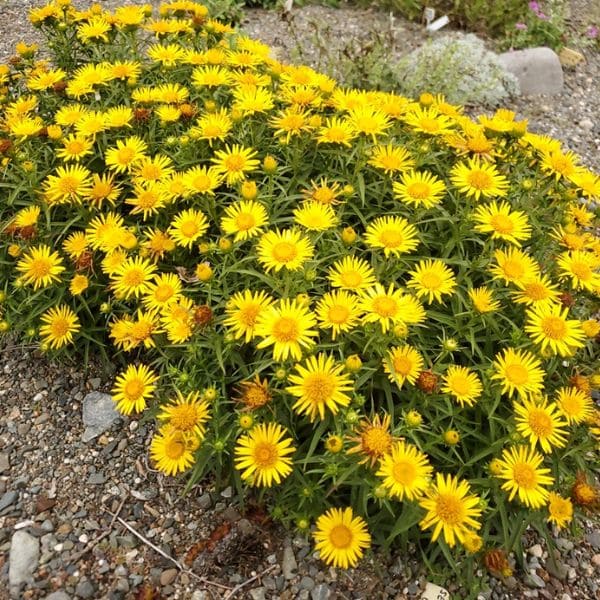
- Plant Type: Perennial
- Bloom Time: Summer
- Sun Exposure: Full Sun
- Soil Requirement: Moist, Well-drained
- USDA Hardiness Zones: 3-8
Inula owns large, bright yellow, daisy-like flowers. Ite can grow quite tall up to 6 feet, making it an excellent choice for the back of borders.
To plant inula, choose a sunny spot in your garden and space the plants about 18-24 inches apart.
Elecampane is low-maintenance but benefits from a balanced fertilizer. Deadhead spent flowers to encourage continuous blooming and cut back the stems in late fall to prepare for winter.
Traditionally, its roots are known for their expectorant properties and are often used to treat respiratory conditions.
Isotoma (Blue Star Creeper)
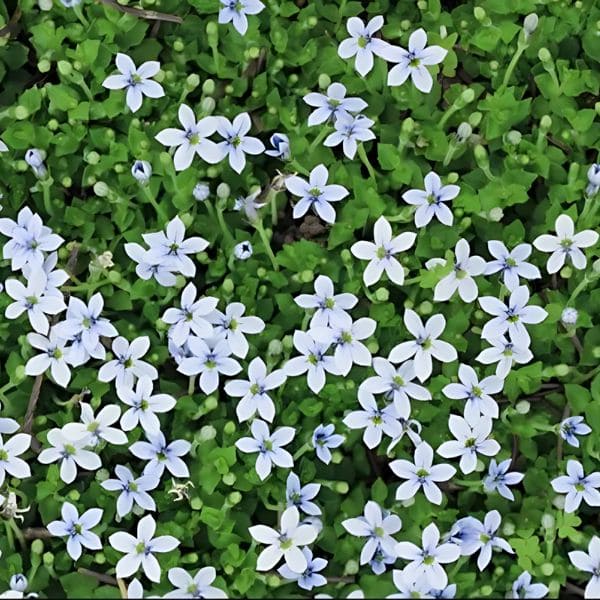
- Plant Type: Perennial
- Bloom Time: Summer to Fall
- Sun Exposure: Full Sun to Partial Shade
- Soil Requirement: Well-drained, Moist
- USDA Hardiness Zones: 6-9
Isotoma is a low-growing plant and native to Australia. It has tiny, delicate flowers that bloom from summer to fall.
When growing these plants, you should space about 12 inches apart to allow them to spread and form a dense mat.
Isotoma requires minimal care. Sometimes you can trim the plants lightly to maintain their shape and encourage new growth.
Blue Star Creeper is ideal for creating a lush, flowering ground cover that can handle light foot traffic, making it perfect for paths and walkways.
It also looks stunning in rock gardens, borders, and as a filler between pavers.
Ipheion (Spring Starflower)
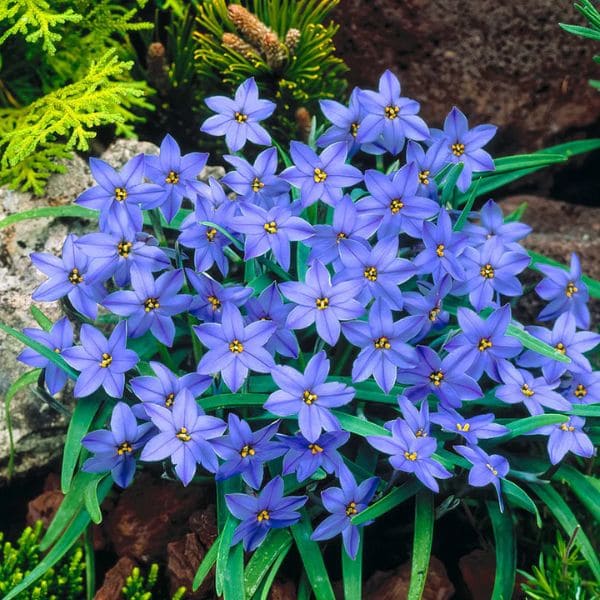
- Plant Type: Perennial Bulb
- Bloom Time: Spring
- Sun Exposure: Full Sun to Partial Shade
- Soil Requirement: Well-drained, Slightly Acidic to Neutral
- USDA Hardiness Zones: 5-9
Ipheion is a perennial bulb owning star-shaped flowers in shades of blue, white, and occasionally pink.
You should plant the bulbs in the fall, about 2-3 inches deep and spaced 3-4 inches apart, in well-drained, slightly acidic to neutral soil.
Remember to water ipheion regularly during the growing season and fertilize with a balanced, slow-release fertilizer in early spring.
Spring Starflower is perfect for borders, rock gardens, and naturalizing in lawns or under deciduous trees. Its early blooms provide much-needed color after winter and attract pollinators like bees.
Isoplexis (Canary Island Foxglove)
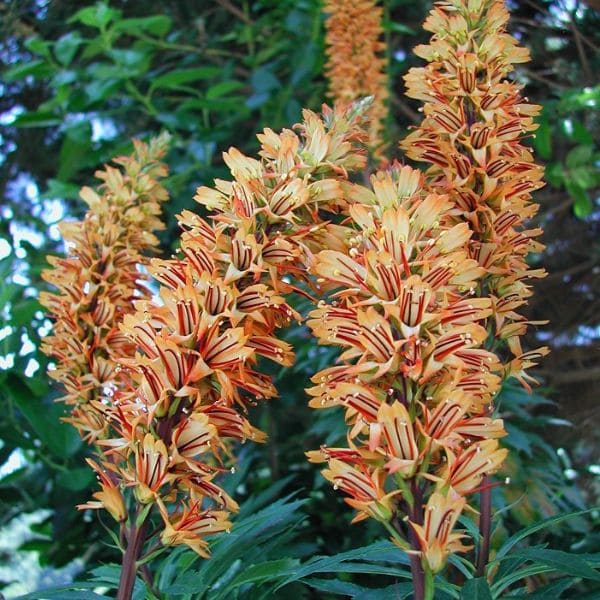
- Plant Type: Shrub
- Bloom Time: Summer
- Sun Exposure: Full Sun
- Soil Requirement: Well-drained
- USDA Hardiness Zones: 9-11
Native to the Canary islands, isoplexis features tall spikes of tubular, orange-yellow flowers that bloom in the summer and dark green, lance-shaped leaves.
You can plant isoplexis in the spring, spacing the plants about 18-24 inches apart to allow for growth and airflow.
To keep your isoplexis healthy and blooming, feed it with a balanced fertilizer in early spring. Prune after flowering to maintain its shape and encourage new growth.
Isoplexis is perfect for adding vertical interest to borders and garden beds. Its vibrant flowers attract pollinators enhancing the biodiversity of your garden.
Indigofera (Indigo Plant)
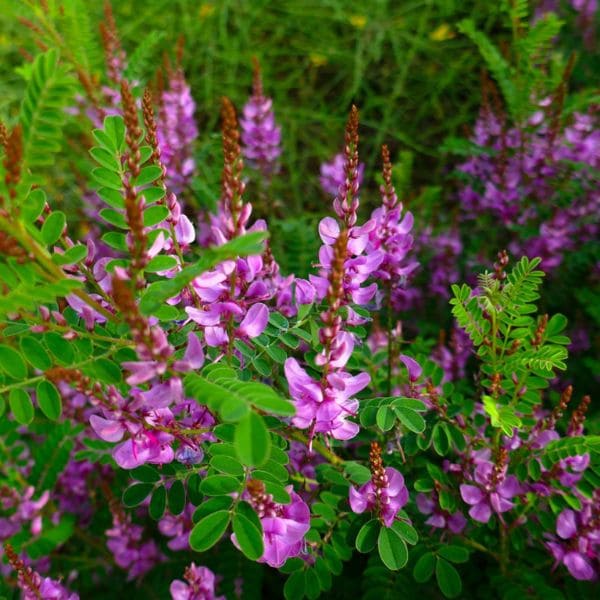
- Plant Type: Perennial Shrub
- Bloom Time: Spring to Summer
- Sun Exposure: Full Sun
- Soil Requirement: Well-drained
- USDA Hardiness Zones: 6-10
Indigofera owns graceful, arching stems adorned with pinnate leaves and clusters of pink to purple pea-like flowers.
You should plant indigofera in the spring, spacing the shrubs about 3 feet apart to allow for ample growth. Once established, it requires minimal maintenance.
Indigofera is not only a visual treat but also attracts bees and butterflies. Additionally, it can be used for natural dyeing, offering a unique and sustainable way to add color to fabrics.
Incarvillea (Hardy Gloxinia)
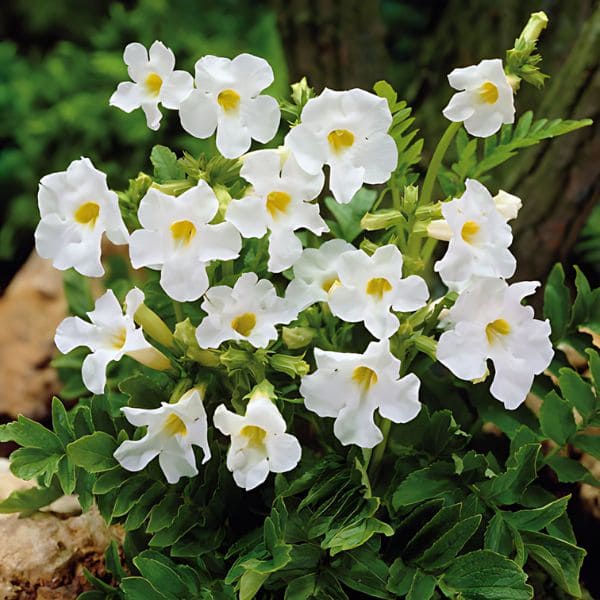
- Plant Type: Perennial
- Bloom Time: Late Spring to Summer
- Sun Exposure: Full Sun to Partial Shade
- Soil Requirement: Well-drained, Fertile
- USDA Hardiness Zones: 5-9
Native to Asia, particularly China, incarvillea owns trumpet-shaped, vibrant pink to red flowers and lush, fern-like foliage adding colors to borders and garden beds from late spring to summer.
To plant incarvilleas, choose a spot that receives at least 4-6 hours of sunlight daily. Space them about 12-18 inches apart to allow for good air circulation.
Also, you need to deadhead spent flowers and feed with a balanced fertilizer in early spring to ensure continuous blooming.
With bright flowers, hardy gloxinia can attract pollinators and is perfect for borders, rock gardens, and containers.
Illicium (Star Anise)
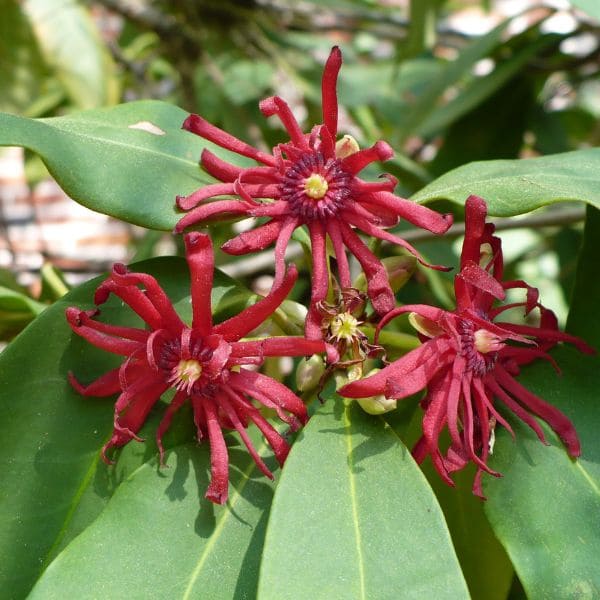
- Plant Type: Evergreen Shrub
- Bloom Time: Spring to Summer
- Sun Exposure: Full Sun to Partial Shade
- Soil Requirement: Moist, Well-drained
- USDA Hardiness Zones: 7-10
Illicium has glossy, aromatic leaves and star-shaped flowers. Native to East Asia and North America, it is well-suited to many garden settings from shady woodland gardens to sunny borders.
You should plant illicium in a spot that receives morning sun and afternoon shade for best results.
To keep your Illicium looking its best, apply a balanced fertilizer in early spring and prune lightly after flowering to maintain its shape.
Illicium is perfect for creating a fragrant hedge. In addition, the leaves and seeds of some illicium species are used to treat toothache and dermatitis topically.
Ilex (Holly)
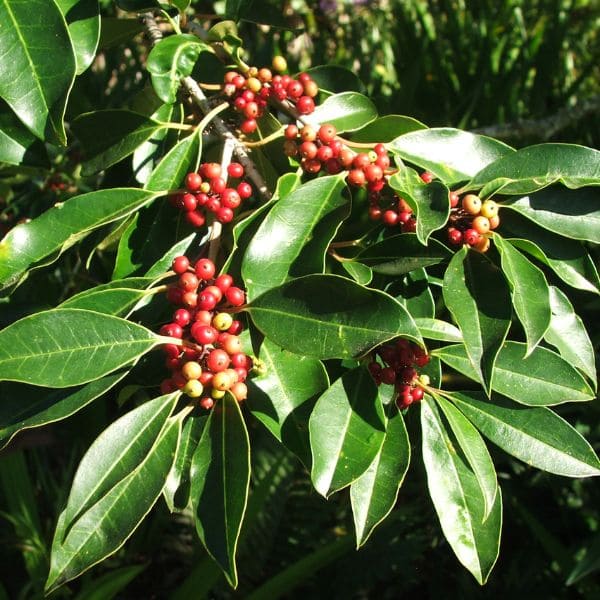
- Plant Type: Evergreen or Deciduous Shrub/Tree
- Bloom Time: Spring
- Sun Exposure: Full Sun to Partial Shade
- Soil Requirement: Well-drained, Acidic to Neutral
- USDA Hardiness Zones: 5-9
Native to temperate and subtropical regions worldwide, ilex includes a variety of species ranging from small shrubs to large trees with glossy, spiny leaves and bright red berries.
To plant holly, choose a location with good air circulation and space the plants according to their mature size. Also, water regularly, especially during the first few years to establish a strong root system.
Holly is perfect for hedges, foundation plantings, and as a standalone specimen. Its bright berries attract birds, adding life to your garden, especially in winter.
The branches with berries are often used in holiday decorations, bringing a festive touch to homes.
Iresine (Bloodleaf)
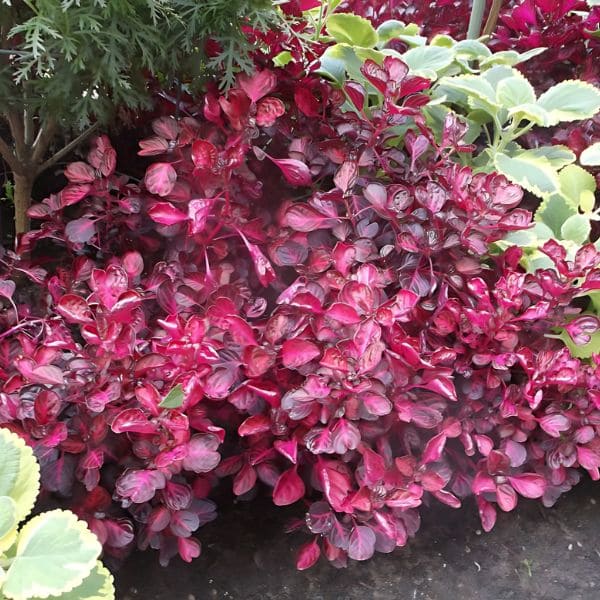
- Plant Type: Perennial
- Bloom Time: Year-round (grown primarily for foliage)
- Sun Exposure: Full Sun to Partial Shade
- Soil Requirement: Well-drained, Fertile
- USDA Hardiness Zones: 10-11 (often grown as an annual in cooler zones)
Native to tropical regions of America, iresine owns vibrant red, pink, and purple foliage.
For the best color, plant iresines in a spot that receives bright, indirect light. Also, space them about 12-18 inches apart to allow for growth and airflow.
While the plants are generally pest-free, watch for aphids and spider mites and treat them promptly if they appear.
Iresine is perfect for adding color to garden beds, borders, and containers. Its striking foliage makes it an excellent accent plant, and it pairs beautifully with other annuals and perennials.
Idesia (Wonder Tree)
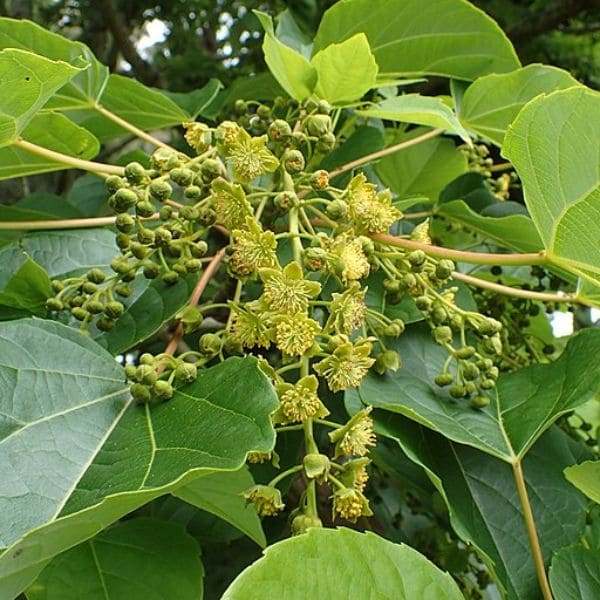
- Plant Type: Deciduous Tree
- Bloom Time: Spring
- Sun Exposure: Full Sun to Partial Shade
- Soil Requirement: Well-drained, Fertile
- USDA Hardiness Zones: 6-9
Idesia has broad, heart-shaped leaves, fragrant yellow-green flowers, and striking clusters of red berries in the fall. Native to East Asia, it can grow up to 50 feet tall to provide shade and ornamental interest.
You should plant idesia in the spring or fall with enough space to grow to its full potential. Water regularly, especially during the first few years, to establish a strong root system.
Besides, you can fertilize it in early spring with a balanced fertilizer to promote healthy growth. Prune in late winter to shape the tree as desired.
Isatis (Woad)
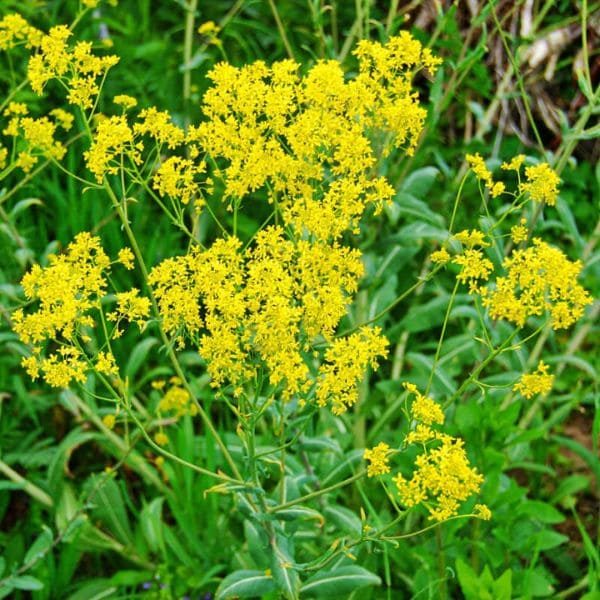
- Plant Type: Biennial or Perennial
- Bloom Time: Spring
- Sun Exposure: Full Sun
- Soil Requirement: Well-drained, Alkaline to Neutral
- USDA Hardiness Zones: 4-8
Native to Europe and Western Asia, isatis is hardy and adaptable to various growing conditions. It boasts bright yellow flowers in spring and attractive seed pods.
To plant isatis, sow seeds directly into the garden in early spring or late fall. Thin the seedlings to about 12 inches apart to allow for proper growth.
Additionally, its leaves can be harvested to produce a natural blue dye, and its flowers attract beneficial insects like bees and butterflies.
Ismene (Spider Lily)
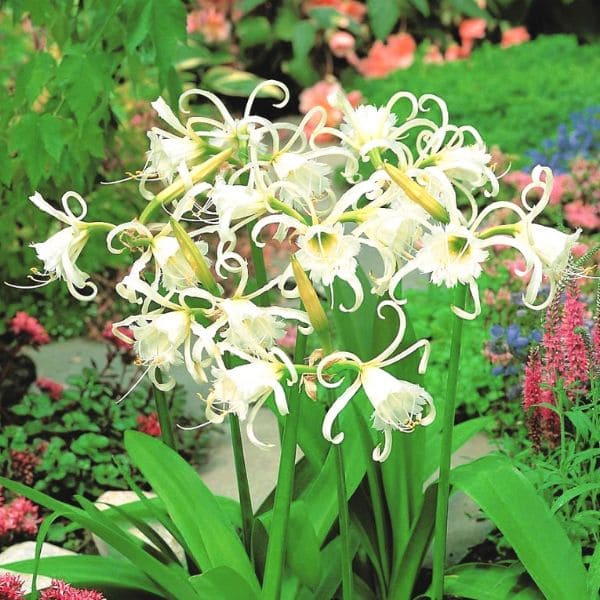
- Plant Type: Perennial Bulb
- Bloom Time: Late Spring to Early Summer
- Sun Exposure: Full Sun to Partial Shade
- Soil Requirement: Well-drained, Fertile
- USDA Hardiness Zones: 8-11
Native to the Andes mountains of Peru, ismene owns striking, spidery white flowers with delightful fragrance and lush, strap-like foliage.
When planting ismene, choose a sunny spot in your garden and plant the bulbs about 4 inches deep and 8 inches apart.
Besides, you should use a balanced fertilizer during the growing season to encourage prolific blooming. After the flowers have faded, allow the foliage to die back naturally to nourish the bulbs for the next season.
In colder climates, dig up the bulbs before the first frost and store them in a cool, dry place until the following spring.
